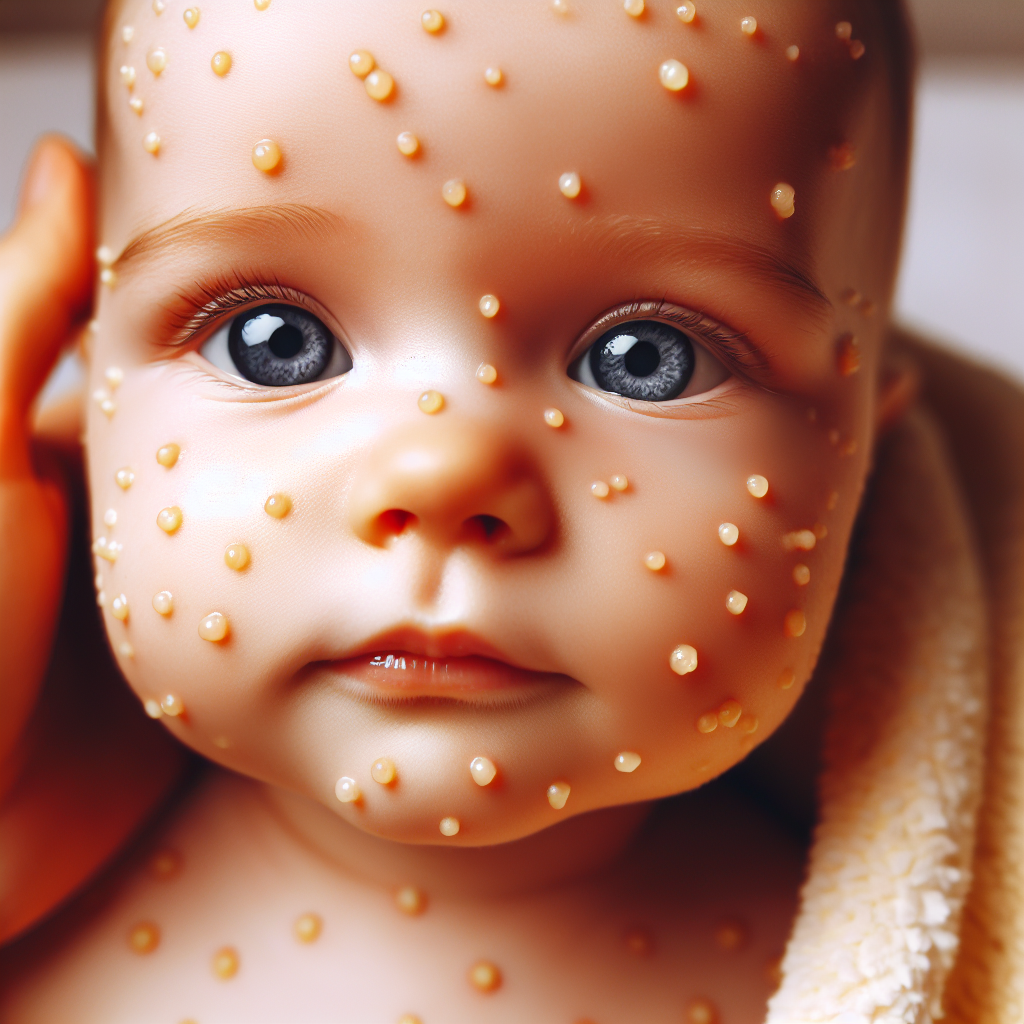Milia in Babies: Manifestations and Severity
When it comes to luscious baby skin, milia is a word that can make parents worry. Basically, milia refers to the small white bumps that often appear on the face of newborns. Although it may seem alarming, it is a fairly common and innocent condition. This article aims to explore everything parents need to know about milia in babies, from manifestations to severity and approach.
Skin Development in Babies
During the first weeks and months of life, the baby's skin goes through many changes and adapts to life outside the womb. It is normal for various dermatological conditions to appear during this process, including milia, which is characterized by the formation of small keratin-filled cysts.
Babies' skin is delicate and sensitive, and conditions like milia are quite common. These small bumps do not cause discomfort and, in most cases, resolve on their own without requiring medical treatment.
Manifestations of Mercy
Milia appear as small white or yellow nodules that usually appear on the nose, cheeks, forehead, and sometimes the neck or upper torso. The bumps are tiny, usually under 3mm in diameter, and are filled with keratin, the protein substance found in skin and hair.
Of course, any irregularity on the baby's skin is a cause for concern for parents, but it is important to remember that milia are not painful or harmful and are not a sign of a more serious condition.
Severity of the Condition
Although the appearance of pity can be disturbing to parents, it should be emphasized that in most cases it is a benign condition. Milia is simply due to a temporary build-up of keratin and is not contagious.
Most episodes of milia resolve on their own within a few weeks or months as the skin continues to mature and adapt. Rarely, milia persist and in this case a pediatric dermatologist can offer treatment options.
Infant Motor Development and the Impact of Mercy
Even though milia does not affect the motor development of babies, it is interesting to note that this condition occurs during a period of rapid growth. In the first months of life, babies develop hand-eye coordination, begin to control their head movements, and learn to coordinate their movements.
Milia do not influence these developments, but merely indicate that the child's skin is still adapting to its new environment. Parents can continue to encourage their children's motor development without worrying about the little bumps on their skin.
Language Development and Milia
Similar to motor development, milia does not influence language development in babies. It is curious, however, to think how at the same time, when these rashes appear, children begin to produce sounds and syllables.
As their skin goes through changes, they discover new ways to express themselves and interact. Parents might be concerned to see this condition on their babies face, but it should not be a cause for concern as it does not affect the overall health of the baby.
Treatment and Care
Although milia usually does not require treatment, it is essential to maintain a consistent skin care routine to promote skin health. Parents should avoid using oily or creamy lotions on milia-affected areas, as these can make the healing process more difficult.
If the bumps do not disappear after a few weeks or if signs of infection appear, it is advisable to consult a doctor. It is also important not to try to remove or break the milia bumps, as this can lead to infection and scarring.
Conclusion
Milia in babies can be a cause for concern for new parents, but it is a common and harmless condition. These appear as small white or yellowish nodules, predominantly on the child's face, and usually disappear on their own. Although it does not affect motor or language development, it is important that parents maintain a proper skin care routine and seek medical advice if they feel it is necessary.
As parents, it's natural to want to protect and care for every aspect of our child. Being informed about various dermatological conditions such as milia can help give you peace of mind and focus on the joys of parenthood. If you have experienced milia in your babies and want to share tips or concerns, we invite you to visit our comments section or subscribe to our newsletter for more relevant information on baby care.














































































































































